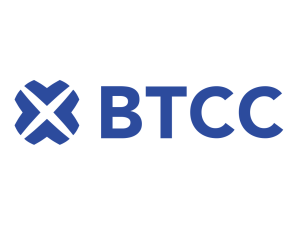A Detailed Introduction of Yield Farming
Yield farming was the hottest topic of the 2020 DeFi summer, and the total value locked of liquidity pools continues to reach new highs in 2021. So what exactly is yield farming, how does it work and what is the risk? Read more to find it out.
Yield farming is the practice of staking or lending crypto assets in order to generate high returns or rewards in the form of additional cryptocurrency. This innovative yet risky and volatile application of decentralized finance (DeFi) has skyrocketed in popularity recently thanks to further innovations like liquidity mining. Yield farming is currently the biggest growth driver of the still-nascent DeFi sector, helping it to balloon from a market cap of $500 million to $10 billion in 2020.
In short, yield farming protocols incentivize liquidity providers (LP) to stake or lock up their crypto assets in a smart contract-based liquidity pool. These incentives can be a percentage of transaction fees, interest from lenders or a governance token (see liquidity mining below). These returns are expressed as an annual percentage yield (APY). As more investors add funds to the related liquidity pool, the value of the issued returns decrease accordingly.
At first, most yield farmers staked well-known stablecoins USDT, DAI and USDC. However, the most popular DeFi protocols now operate on the Ethereum network and offer governance tokens for so-called liquidity mining. Tokens are farmed in these liquidity pools, in exchange for providing liquidity to decentralized exchanges (DEXs).
Liquidity mining occurs when a yield farming participant earns token rewards as additional compensation, and came to prominence after Compound started issuing the skyrocketing COMP, its governance token, to its platform users.
Most yield farming protocols now reward liquidity providers with governance tokens, which can usually be traded on both centralized exchanges like Binance and decentralized exchanges such as Uniswap.
Annual Percentage Yield (APY) in Yield Farming
Yield farmers, and most protocols and platforms, calculate the estimated returns in terms of annual percentage yield (APY). APY is the rate of return gained over the course of a year on a specific investment. Compounding interest, which is computed on a regular basis and applied to the amount, is factored into the APY.
Since the DeFi summer of 2020, yield farmers have been chasing eye-opening thousand percent APYs. However, these protocols and coins may be highly risky and susceptible to rug pulls. Furthermore, the yield is earned in the form of protocol tokens, and is subject to highly volatile price swings.
Ten of the Most Popular Yield Farming Protocols
Yield farmers will often use a variety of different DeFi platforms to optimize the returns on their staked funds. These platforms offer variations of incentivized lending and borrowing from liquidity pools. Here are seven of the most popular yield farming protocols:
Aave is an open source non-custodial decentralized lending and borrowing protocol to create money markets, where users can borrow assets and earn compound interest for lending in the form of the AAVE (previously LEND) token. Aave has the highest TVL locked among all DeFi protocols, sitting at over $21 billion as of August 2021. Users can earn up to 15% APR for lending on AAVE.
Compound is a money market for lending and borrowing assets, where algorithmically adjusted compound interest rate as well the governance token COMP can be earned. It is audited and reviewed to ensure the highest level of security standard. Total supply is over $16 billion as of August 2021 and APY range from 0.21% to 3%.
Curve Finance is a DEX that lets users and other decentralized protocols exchange stablecoins with low fees and low slippage using its unique market-making algorithm. It is the largest DEX in terms of TVL, with over $9.7 billion locked. Base APY can go as high as 10%, while rewards APY can go over 40%. Stablecoin pools are generally safer as they do not lose their peg value.
Uniswap is a hugely popular DEX and AMM that enables users to swap almost any ERC20 token pair without intermediaries. Liquidity providers must stake both sides of the liquidity pool in a 50/50 ratio, and in return earn a proportion of transaction fees as well as the UNI governance token. There are two live versions – Uniswap V2 and V3. The latest version, Uniswap V3, is a growing protocol ecosystem with over 200 integrations. TVL is $5 billion for V2 and over $2 billion for V3 as of August 2021.
Instadapp is the world’s most advanced platform to leverage the potential of DeFi. Users can manage and build their DeFi portfolio and developers can build DeFi infrastructure using their platform. As of August 2021, over $9.4 billion is locked on Instadapp.
SushiSwap is a fork of Uniswap, which caused a huge wave in the community during their liquidity migration process. It is now a DeFi ecosystem, with multi-chain AMM, lending and leverage markets, onchain mini Dapps and launchpad. TVL on the platform is $3.55 billion as of August 2021.
PancakeSwap is a DEX built on the Binance Smart Chain (BSC) network for swapping BEP20 tokens. PancakeSwap uses an automated market maker (AMM) model where users trade against a liquidity pool. It has the highest TVL among BSC protocols, with over $4.9 billion locked as of August 2021. It focuses heavily on gamification features, with lottery, team battles and NFT collectibles. APYs can go as high as over 400%.
Venus Protocol is an algorithmic-based money market system that aims to bring lending and credit-based system on the Binance Smart Chain. Users supply collateral to the network and earn APY for lending, while borrowers pay an interest. Venus differs by its ability to use the collateral supplied to the market not only to borrow other assets but also to mint synthetic stablecoins with over-collateralized positions that protect the protocol. These synthetic stablecoins are backed by a basket of cryptocurrencies. TVL is over $3.3 billion as of August 2021.
Balancer is an automated portfolio manager and trading platform. Its liquidity protocol distinguishes itself through flexible staking. It doesn’t require lenders to add liquidity equally to both pools. Instead, liquidity providers can create customized liquidity pools with varying token ratios. Over $1.8 billion is locked as of August 2021.
Yearn.finance is an automated decentralized aggregation protocol that allows yield farmers to use various lending protocols like Aave and Compound for the highest yield. Yearn.finance algorithmically seeks the most profitable yield farming services and uses rebasing to maximize their profit. Yearn.finance made waves in 2020 when its governance token YFI climbed to over $40,000 in value at one stage. Users can earn up to 80% APY in Yearn, and $3.4 billion is locked in the protocol.
Is There Yield Farming for Bitcoin?
As far as crypto farming goes, most users would ask if there is yield farming for Bitcoin? While there are no DeFi yield farming protocols for Bitcoin, wrapped Bitcoin (WBTC) effectively brings Bitcoin into the Ethereum blockchain and DeFi applications. By learning how to wrap bitcoin, holders of Bitcoin can earn a few percent of yield while lending it out on protocols such as Compound.
Yield Farming’s Risks
Yield farming can be incredibly complex and carries significant financial risk for both borrowers and lenders. It is usually subject to high Ethereum gas fees, and only worthwhile if thousands of dollars are provided as capital. Users also run further risks of impermanent loss and price slippage when markets are volatile. CoinMarketCap has a yield farming ranking page, which an impermanent loss calculator, to help you discover your risks — CoinMarketCap also has a page that tracks the prices of the leading yield farming tokens.
Most notably though, yield farming is susceptible to hacks and fraud due to possible vulnerabilities in the protocols’ smart contracts. These coding bugs can happen due to the fierce competition between protocols, where time is of the essence and new contracts and features are often unaudited or even copied from predecessors or competitors.
Examples of vulnerabilities that resulted in severe financial losses include the Yam protocol (which raised over $400m in days before a critical bug was exposed) and Harvest.Finance, which in October 2020 lost over $20 million in a liquidity hack.
DeFi protocols are permissionless and dependent on several applications in order to function seamlessly. If any of these underlying applications are exploited or don’t work as intended, it may impact this whole ecosystem of applications and result in the permanent loss of investor funds.
There has been a rise in risky protocols that issue so-called meme tokens with names based on animals and fruit, offering APY returns in the thousands. It is advised to tread carefully with these protocols, as their code is largely unaudited and returns are whim to risks of sudden liquidation due to price volatility. Many of these liquidity pools are convoluted scams which result in “rug pulling,” where the developers withdraw all liquidity from the pool and abscond with funds.
As blockchain is inherently immutable, most often DeFi losses are permanent and irreversible. Therefore, users are advised to really familiarize themselves with the risks of yield farming and conduct their own research.








